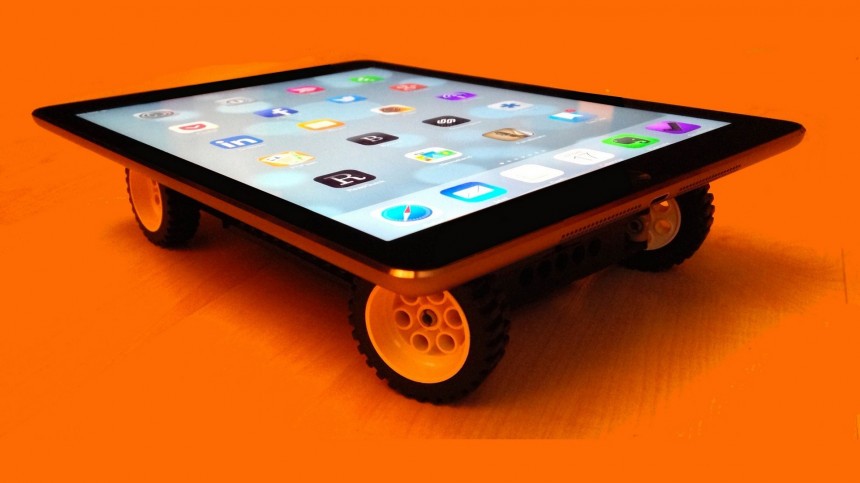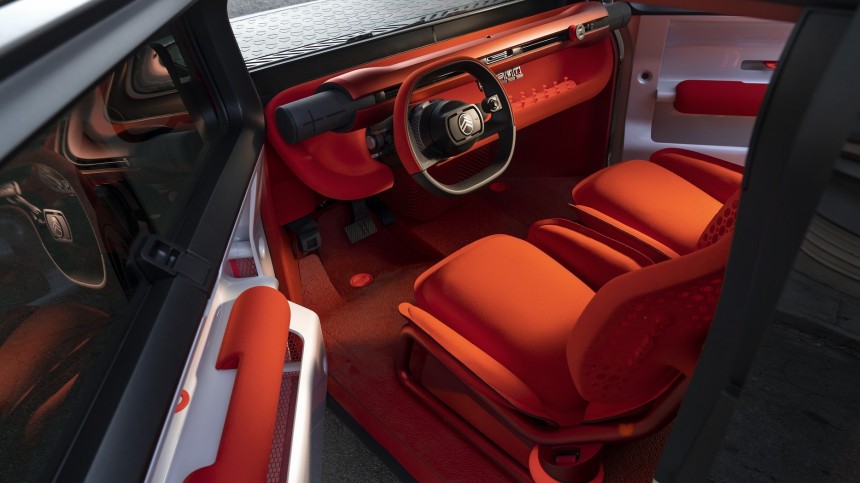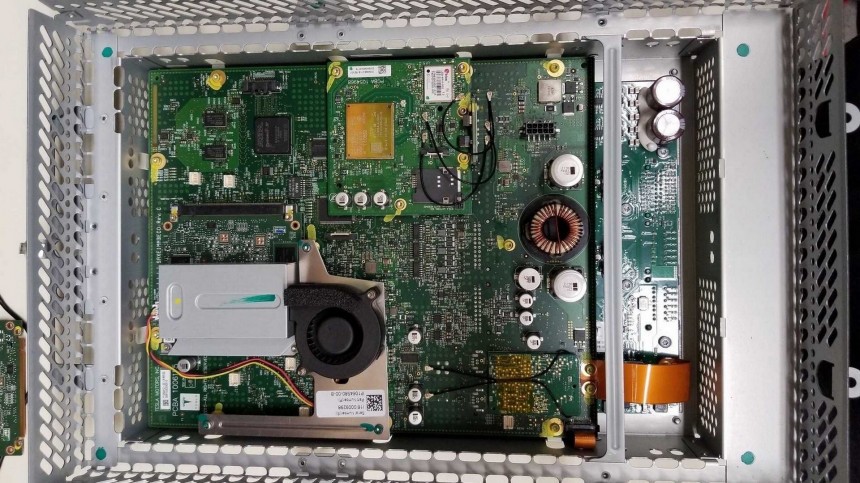Hyundai said it would commit to buttons for as long as possible. In a chat with Stephen Ottley, the Korean automaker’s head of design stated that “when it comes to driving, it’s safest to have your eyes on the road and your hands on the wheel.” It may seem that what Sang Yup Lee expressed was just obvious, but not in times of “computers on wheels.” In fact, it represents a small victory for car guys in their tug-of-war with tech bros.
This clash is not based on opposing electric cars to those with combustion engines, as most people might think. It is much deeper than that: it involves turning vehicles into something other than just that – as if people were just wasting time while they drove. They aren’t: there is nothing more critical while driving than to pay attention to what you are doing to get where you need to be.
Lee said that in a context in which automakers want to cut costs and remove people from behind the wheel. Instead of promoting driving pleasure, they are surrendering to the claim that driving is boring. Car companies are also afraid of becoming the new cigarette manufacturers. They are constantly accused of making products that only kill people, either with pollution or traffic crashes. Although that is a ridiculous fallacy, it seems to be working.
Cigarettes have no purpose, and the evils they cause are intrinsic to their use. Automobiles have the noble mission of moving people and stuff around. Giving cars electric motors solves a major chunk of the pollution problem. Crashes are an anomaly that automakers intend to eliminate in ten or fifteen years. They are developing zero-death programs, which rely on advanced driver assistance systems (ADAS) and autonomous vehicles. While that is a noble goal, the way to reach it is controversial and not very effective. Its premise is that people are just too stupid or lazy to drive properly – an impression YouTube videos and our own experiences on the road frequently reinforce. Ironically, that is quite the opposite.
Jalopnik recently published a pretty interesting story about traffic safety on American roads. With data from the National Highway Traffic Safety Administration (NHTSA), Steve DaSilva calculated how safe an autonomous car should be to beat human drivers. According to the safety regulator, drivers in the U.S. drove 2,903,622,000,000 miles and crashed 5,215,071 times in 2020. That’s one crash for every 556,775 miles traveled, or no trouble for 99.999820% of the time. That’s a very high bar for autonomous driving to overcome: it needs to do so at least 99.9999% of the time to be better.
With such a high success rate, betting on the team that is winning should be the logical choice. Sadly, car makers just want to turn vehicles into moving computers – as if they never crashed or failed. The alternative would be to push for better driver’s training programs worldwide, which would not improve public perception of automobiles and would possibly even make them more difficult to sell. Robotaxis help in these two missions with an additional advantage: how much car companies could save in the process.
Electric cars are more expensive than those with combustion engines. To sell them at similar prices, automakers have to avoid spending as much as possible. That includes making smaller battery packs and removing components that they hope drivers will not notice – buttons, for example.
Tesla started this trend by putting everything a touchscreen could theoretically control into one. That allowed it to eliminate levers and buttons in the process. The reasoning was that its cars would be autonomous anyway, so why bother making driving easier? Allegedly, Elon Musk wanted to make the Model Y without a steering wheel – something Tesla came pretty close to doing with the Model S and its steering yoke. It is no surprise that the $700 steering wheel upgrade sold out.
That obviously helped Tesla improve its profit margins. On the other hand, it made driving its cars a lot more complicated than it should be. A 2020 verdict from the Higher Regional Court in Karlsruhe, Germany, shows that pretty well. On the evening of March 15, 2019, a Model 3 driver hit an embankment and some trees after trying to adjust the windshield wiper speed on the touchscreen. Although that is how the car was conceived to work, the judges considered the touchscreen to be an electronic device – like a tablet or a smartphone. In other words, it could only be operated while the vehicle was parked, not while driving.
As usual, Tesla advocates blamed the driver and said he could have set the vehicle to adjust the windshield wiper automatically. If that was his only option, there is clearly something very wrong with the way these cars were designed. Several Tesla owners say the automatic windshield wiper in their cars is useless. A $10 sensor and a simple lever could solve that.
Perhaps the most extreme example of how Tesla cut costs without thinking about customer convenience was removing the manual lock from glove boxes. To open them, you have to go to the touchscreen. If Tesla customers accept that, why wouldn’t other carmakers’ clients be willing to do the same? This is what several companies are testing, with GM trying this with the Cadillac Lyriq. Thankfully, Hyundai already made it clear it wouldn’t follow the same path. How many other car automakers are willing to make the same commitment?
Are these automakers to blame for wanting to make more money from each car they sell? It would be unfair to do so: that’s the game they play to survive. If the company with the world’s highest market cap does that, and it works, game on. However, allowing this strategy to flourish is something car buyers are entitled to stop. In a way, they did so when the Dacia Logan became a commercial success back in the early 2000s. That was when people showed they wanted a back-to-basics vehicle that offered great value for money. A production version of the Citroën Oli could eventually repeat that.
The fear of being called old-fashioned or outdated probably played a vital part in getting us to where we are now. If you bring up valid concerns about battery electric cars, you are accused of going against humanity and being a climate-change denier. If you wish your car had buttons and levers to control functions instead of a touchscreen, people will say you are used to the past. Even admitting you like to drive is seen as something negative: bicycles and public transportation are the only valid option for these critics, regardless of the context.
It is more than time gearheads get more vocal about what they want cars to be and even if they want them to remain as a viable personal transportation option. Electronic nannies are turning them into expensive options for most people who could afford them not that long ago. They are increasingly more reliant on computers and software that will make them as disposable as current electronic gadgets. Again, the MCUv1 case involving Tesla demonstrates quite well what we should expect – and fear – from the future.
Electric cars can be exciting machines with amazing acceleration times and good handling. Whatever powers a vehicle, we should just make sure that it will last, be reliable, fun, and as easy to drive as possible. Although computers are impossible to separate from cars nowadays, they should be conceived either to last as long as the vehicle should – which is always tricky when we talk about hardware and software – or to be upgradeable.
Above all, if anything is to be suppressed or replaced in a car, it should be for something superior. Nothing has beaten buttons or levers so far. No software or hardware has ever driven better than a human being. While that does not change, cutting costs while just anticipating such a scenario is a sure way to make automobiles worse. That’s a trap that the automotive industry should avoid at all costs. People who love cars and driving are the ones who should be shaping them, not those asking for them to disappear. Kicking off with buttons and levers was possibly an effective way to get rid of all the rest.
Lee said that in a context in which automakers want to cut costs and remove people from behind the wheel. Instead of promoting driving pleasure, they are surrendering to the claim that driving is boring. Car companies are also afraid of becoming the new cigarette manufacturers. They are constantly accused of making products that only kill people, either with pollution or traffic crashes. Although that is a ridiculous fallacy, it seems to be working.
Jalopnik recently published a pretty interesting story about traffic safety on American roads. With data from the National Highway Traffic Safety Administration (NHTSA), Steve DaSilva calculated how safe an autonomous car should be to beat human drivers. According to the safety regulator, drivers in the U.S. drove 2,903,622,000,000 miles and crashed 5,215,071 times in 2020. That’s one crash for every 556,775 miles traveled, or no trouble for 99.999820% of the time. That’s a very high bar for autonomous driving to overcome: it needs to do so at least 99.9999% of the time to be better.
Electric cars are more expensive than those with combustion engines. To sell them at similar prices, automakers have to avoid spending as much as possible. That includes making smaller battery packs and removing components that they hope drivers will not notice – buttons, for example.
Tesla started this trend by putting everything a touchscreen could theoretically control into one. That allowed it to eliminate levers and buttons in the process. The reasoning was that its cars would be autonomous anyway, so why bother making driving easier? Allegedly, Elon Musk wanted to make the Model Y without a steering wheel – something Tesla came pretty close to doing with the Model S and its steering yoke. It is no surprise that the $700 steering wheel upgrade sold out.
As usual, Tesla advocates blamed the driver and said he could have set the vehicle to adjust the windshield wiper automatically. If that was his only option, there is clearly something very wrong with the way these cars were designed. Several Tesla owners say the automatic windshield wiper in their cars is useless. A $10 sensor and a simple lever could solve that.
Are these automakers to blame for wanting to make more money from each car they sell? It would be unfair to do so: that’s the game they play to survive. If the company with the world’s highest market cap does that, and it works, game on. However, allowing this strategy to flourish is something car buyers are entitled to stop. In a way, they did so when the Dacia Logan became a commercial success back in the early 2000s. That was when people showed they wanted a back-to-basics vehicle that offered great value for money. A production version of the Citroën Oli could eventually repeat that.
It is more than time gearheads get more vocal about what they want cars to be and even if they want them to remain as a viable personal transportation option. Electronic nannies are turning them into expensive options for most people who could afford them not that long ago. They are increasingly more reliant on computers and software that will make them as disposable as current electronic gadgets. Again, the MCUv1 case involving Tesla demonstrates quite well what we should expect – and fear – from the future.
Above all, if anything is to be suppressed or replaced in a car, it should be for something superior. Nothing has beaten buttons or levers so far. No software or hardware has ever driven better than a human being. While that does not change, cutting costs while just anticipating such a scenario is a sure way to make automobiles worse. That’s a trap that the automotive industry should avoid at all costs. People who love cars and driving are the ones who should be shaping them, not those asking for them to disappear. Kicking off with buttons and levers was possibly an effective way to get rid of all the rest.














